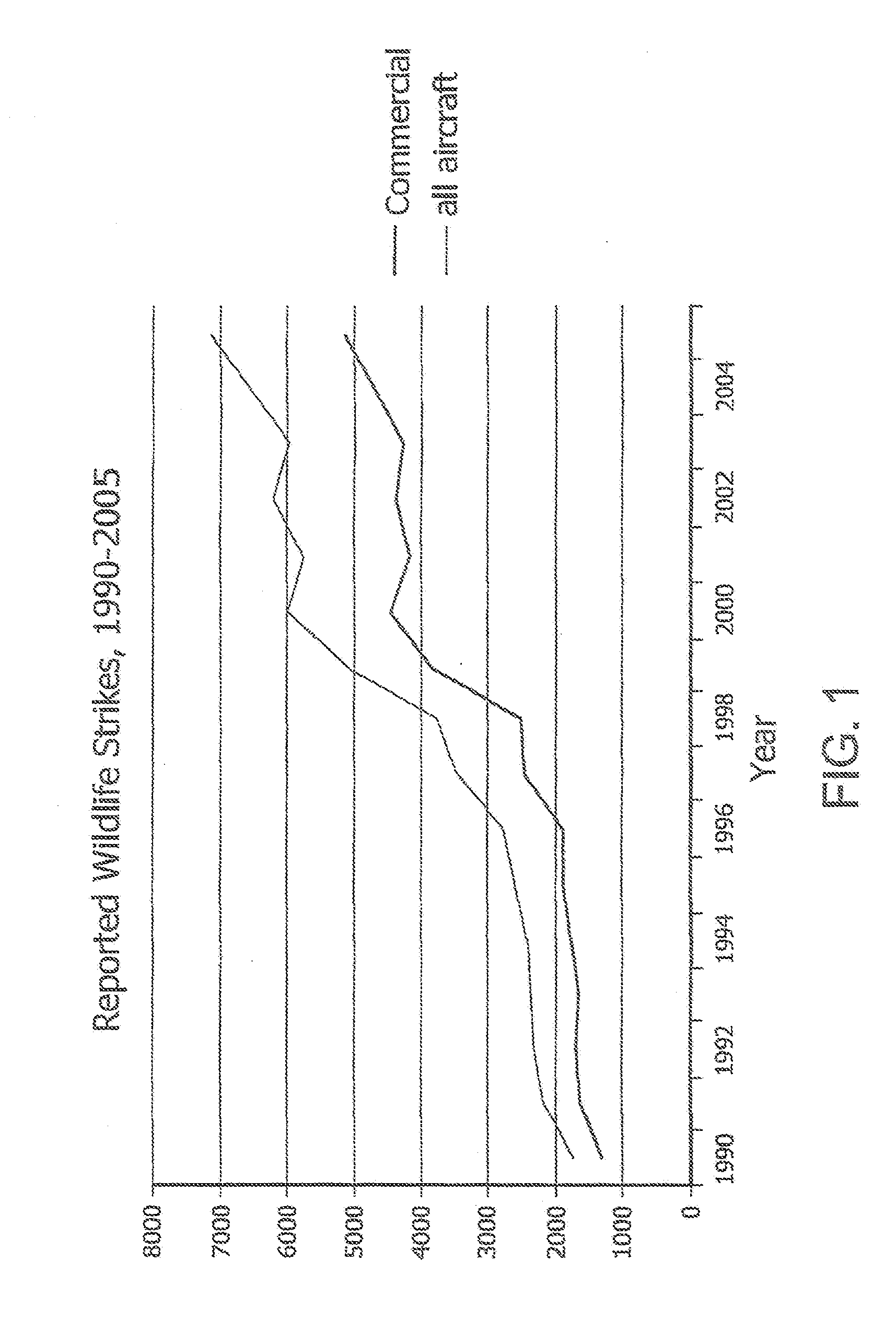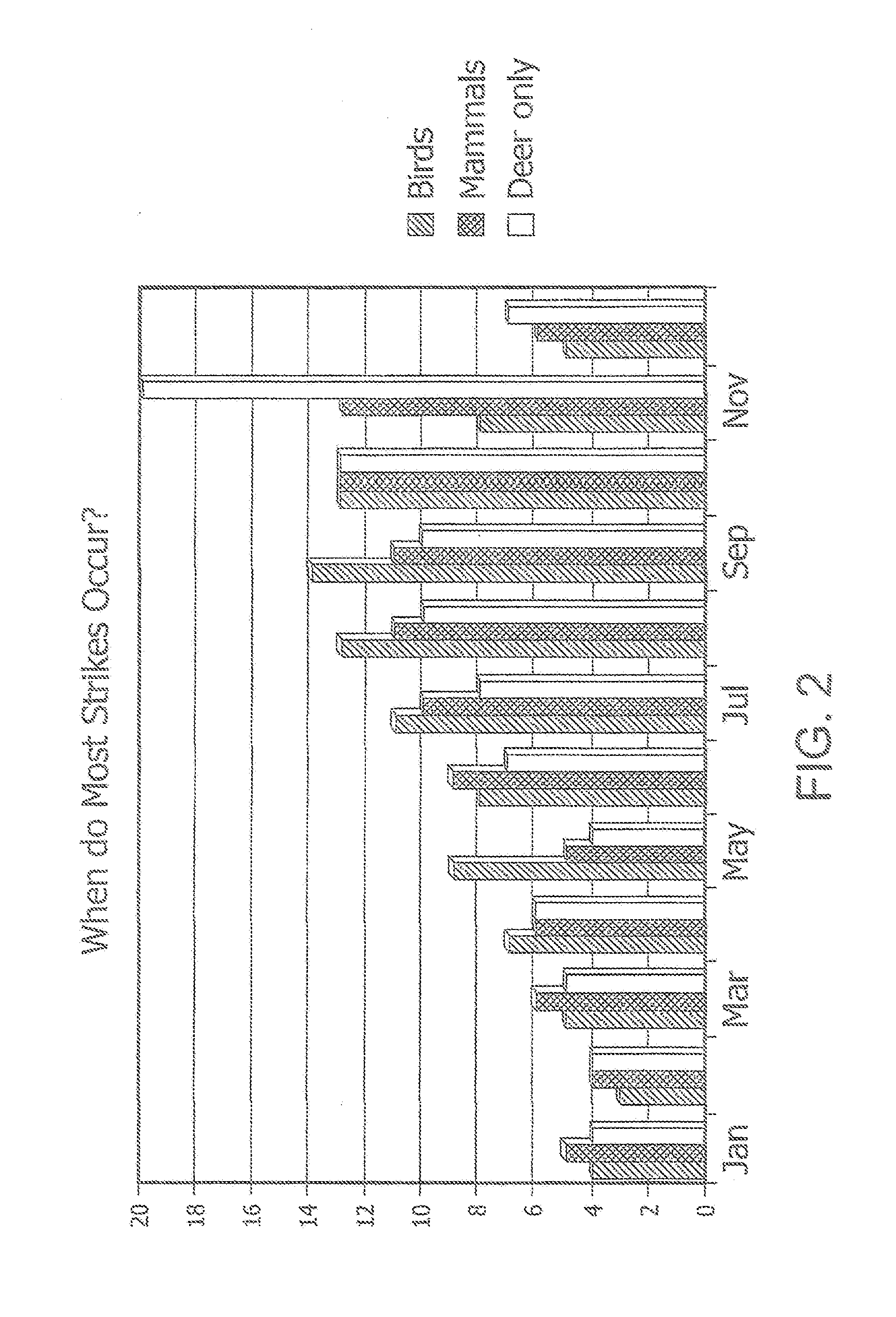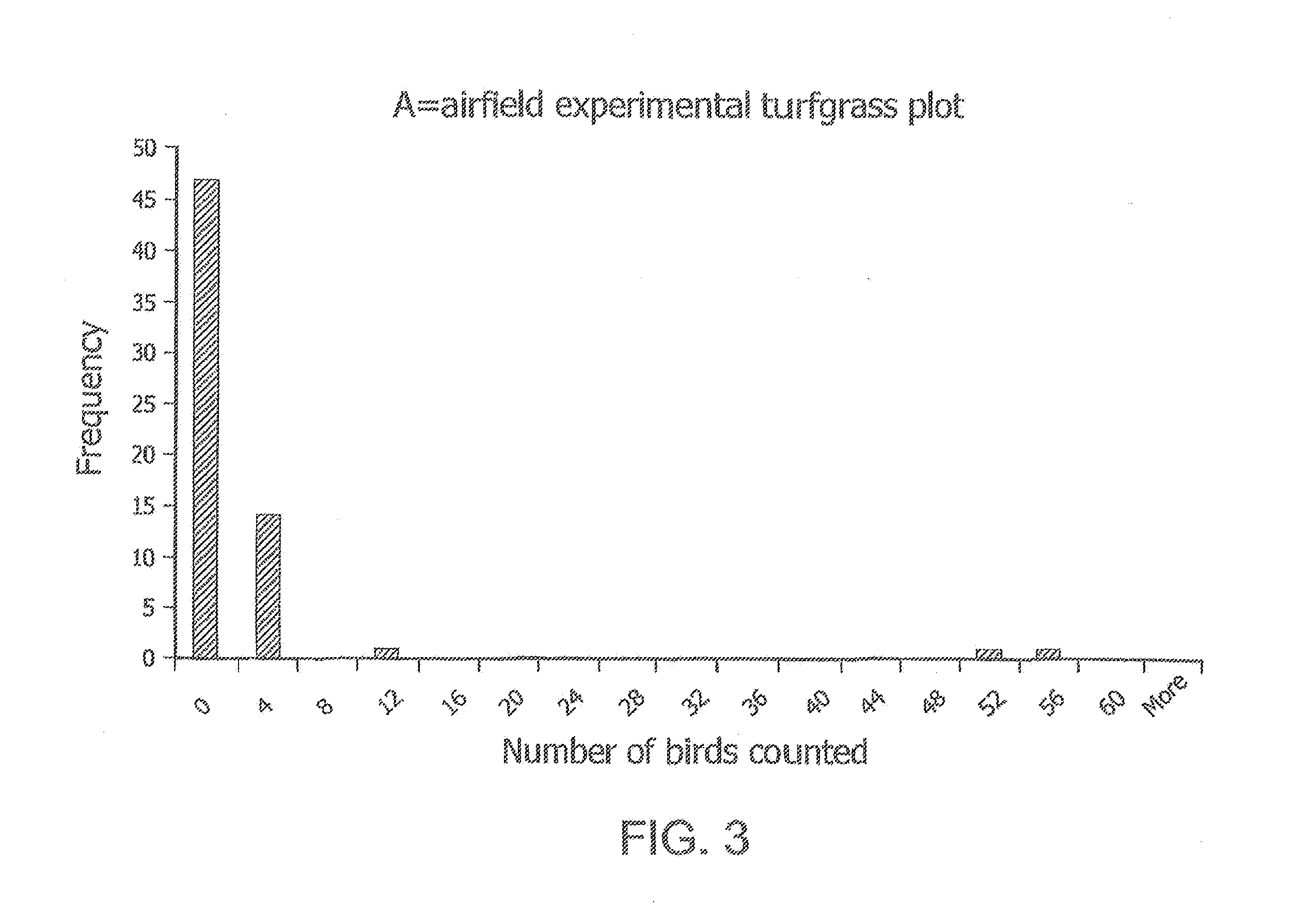Composition and method for growing fine fescue lawns to deter deer, geese and other animals that transmit diseases
a technology of fine fescue lawns and fescue grasses, which is applied in the field of improving the management of airfield grasses to achieve the effect of reducing the amount of grazing and reducing the amount of maintenance required
- Summary
- Abstract
- Description
- Claims
- Application Information
AI Technical Summary
Benefits of technology
Problems solved by technology
Method used
Image
Examples
example 1
[0099]“A” represents the airfield experimental turf grass plots of 1.24 acres and 1.31 acres; plot “AC” represents the airfield control plots of equal size; The precise location of the plots were at latitude N40 04″23.83″, longitude W75 00 19.94″ (NAD 83).
[0100]Soil samples of the test plots were tested by Penn State University. The pH of the soil was found to be more acidic than expected, with a pH of 5.4 and 5.5 (replicated tests), which are considered less than desirable for the grass compositions of the invention. Lime was applied to the test plots to raise the pH to about 6.0. The lime application was pelletized and applied at an approximate rate of 80 lbs. per 1000 square feet, with a composition of 50% dolomite and 50% calcite.
[0101]In order to demonstrate the effect of the seed blend and mix compositions on wildlife management and reduction, the study team herein monitored the numbers and species of birds that presented on the plots. Bird activity was counted during 15 minut...
example 2
[0111]An additional study was performed on a 0.17 acres landside experimental plot centered within the existing mowed grass control plot. Concurrent to the airfield study, the landside plot, one year more mature than the airfield plots, was included in the experiment and was monitored (for same above parameters) throughout its second year. The plot was seeded with the turf grass according to the invention on Sep. 18, 2009. The plot was mowed once per year—on Jun. 10, 2010 and on Jun. 22, 2011. The turf grass achieved an average height of 6 inches prior to mowing. It formed a dense sod except for one four-foot square area where crabgrass encroached. The plot was spot-treated for crabgrass and the spot was reseeded Oct. 24, 2011. It has since filled in. The grass was found to be sun and drought resistant. No fertilization was necessary. No irrigation was necessary. No disease was noted, and the grass resisted weed encroachment well for a new installation. It was spot treated once per ...
example 3
[0114]Set forth in this Example 3 is a suggested seeding specification that can be utilized to grow the grass according to the invention herein on a plot having existing vegetation thereon. (For new construction sites, generally over one-half acre, hydro-seeding per industry standard practices, except as described earlier, is the preferred method.)
[0115]Step 1—Soil Samples. The first step is to pull 6 to 12 soil samples to a depth of 5 inches throughout the site. The soil samples are combined together and sent to a soil testing lab. The soil lab will send back the results of the test and recommendations in the establishment of the seed.
[0116]Step 2—Herbicides. After green-up, and when existing vegetation is actively growing, an application of glyphosate should be applied to control all growth, following the labeling instructions. A second application may have to be applied to control all perennial and annual weeds.
[0117]Step 3—Drill Seeding. Approximately fourteen days after Step 2,...
PUM
 Login to View More
Login to View More Abstract
Description
Claims
Application Information
 Login to View More
Login to View More - R&D
- Intellectual Property
- Life Sciences
- Materials
- Tech Scout
- Unparalleled Data Quality
- Higher Quality Content
- 60% Fewer Hallucinations
Browse by: Latest US Patents, China's latest patents, Technical Efficacy Thesaurus, Application Domain, Technology Topic, Popular Technical Reports.
© 2025 PatSnap. All rights reserved.Legal|Privacy policy|Modern Slavery Act Transparency Statement|Sitemap|About US| Contact US: help@patsnap.com



